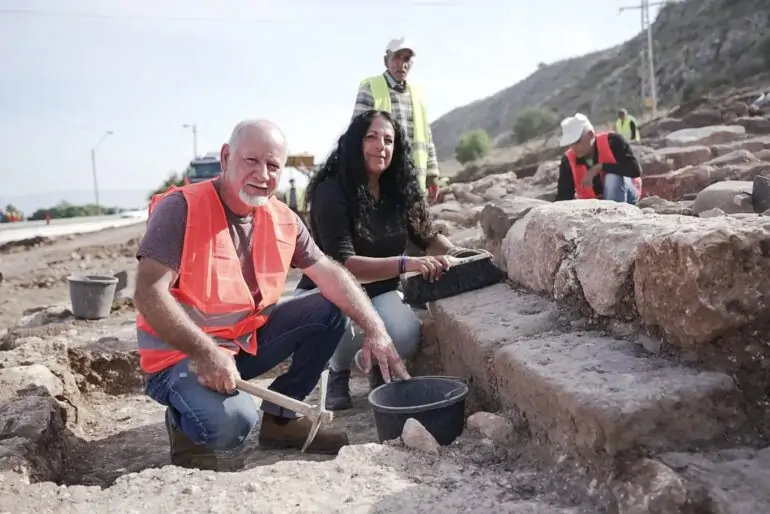
The discovery of a synagogue in the ruins of the ancient Jewish community of Migdal, the birthplace of Mary Magdalene, has sent shockwaves through the archaeological community and beyond.The ancient structure, thought to date back to the time of Jesus, was uncovered during a routine excavation and is now being hailed as a significant find.
The synagogue, which is in excellent condition considering its age, offers a window into the daily life and spiritual practices of this ancient community.
Migdal, located near Tiberius on the western shore of the Sea of Galilee, is historically significant for two reasons.
First, the town served as the primary base for Josephus, also known as Yosef Ben Matityahu, a military leader who played a vital role in the unsuccessful revolt against the Romans in the Galilee region. This rebellion ultimately led to the destruction of the Second Temple in Jerusalem.
Secondly, Migdal has gained fame for being noteworthy as the birthplace of Mary Magdalene, who is referred to as “the Magdaleine” due to her association with the town.
The recent discovery of a second synagogue in Migdal, in addition to the one found in 2009, offers insight into the religious practices of the ancient Jewish community in this town during the time of Jesus and Mary Magdalene, who is believed to have come from Migdal.
According to Avshalom-Gorni, it is possible to imagine Mary Magdalene and her family, along with other residents of Migdal, participating in religious and communal events at the synagogue.
While the first synagogue had a decorative mosaic floor, the second had a compacted, plastered earthen floor.
The recently discovered synagogue is made of basalt and chalk and includes a main hall and two side rooms.
A stone bench and six pillars, two of which have been found, were used to support the roof.
The synagogue’s walls were coated in plaster and decorated with vibrant colors, and a small room at the south end of the main hall contained a shelf that people may have used to store scrolls.
Various artifacts from the period, including pottery candle holders, glass bowls made from molds, rings, and stone utensils used in purification rituals, were also found at the site.
This suggests a connection to sanctity in society at the time, as indicated by ritual baths and stoneware made of limestone to prevent contamination by unkosher practices.
The two synagogues in Migdal, one located in the eastern residential area and the other in the northern industrial zone, were likely used as community meeting places for learning and discussing Torah.
The synagogues in Migdal may have functioned as modest community centers or schools, and the discovery of the second one is in line with the understanding that these meeting houses were important for the community during this time.
Overall, it is likely that these synagogues played a role in fostering a sense of community and spiritual connection among the people of Migdal.
The discovery of the ancient synagogue in Migdal adds to the town’s rich history and cultural significance. It provides a unique opportunity for those interested in Israel’s religious and cultural history.
For Christians, a visit to Migdal and the synagogue can be a meaningful and enriching part of a trip to Israel.
Many companies offer customized Israel tours specifically designed for Christians, such as Israel group tours and Bible land tours.
These tours often include visits to biblical sites and other places of historical and religious significance and can be tailored to the specific interests and needs of the group.
If you are planning a trip to Israel and are interested in learning more about the history and culture of the region, contact Coral Tours. They are a highly respected Israel Christian tour operator, with offices in the US and Israel. They can assist you in designing the perfect Israel Tour itinerary.
Photo credit: The University of Haifa.
